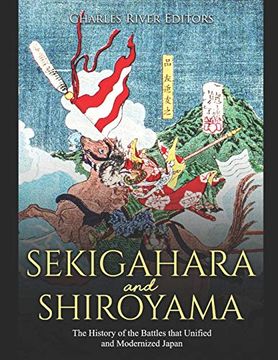Sekigahara and Shiroyama: The History of the Battles That Unified and Modernized Japan (en Inglés)
Reseña del libro "Sekigahara and Shiroyama: The History of the Battles That Unified and Modernized Japan (en Inglés)"
*Includes pictures*Includes a bibliographyOn October 21, 1600, two massive Japanese armies, totaling an estimated 200,000 soldiers armed to the teeth with swords, yari (spears), arrows, muskets and cannons, faced off on a battlefield near the town of Sekigahara. A bitter fight to the death ensued, and the results would determine the course of Japanese history for the next 250 years.On the battlefield was the warlord Ieyasu Tokugawa, a man desiring domain over the entire island of Japan, but standing in his way was Ishida Mitsunari, a warlord controlling vast swaths of western Japan. Moving with his armies from the east, Ieyasu maneuvered into a position at Sekigahara. Ieyasu was relying heavily on the legendary Japanese samurai, but contrary to popular belief, the samurai warriors of that era were avid firearm users, and this battle would be no exception, as both armies bristled with muskets and cannons. Ieyasu was outnumbered, but he had a trump card: traitors placed in the enemy army. These treacherous warlords would join Ieyasu in the midst of the battle, turning it in his favor. When Ieyasu became shogun (military dictator) of Japan, he presided over the beginning of the Tokugawa shogunate, which brought peace and stability to all of Japan if only by ending the constant civil wars. Many changes took place, most notably in the capabilities of the samurai, Japan’s ruling military class, who were no longer active combat participants. Instead, most of these warriors were fighters in name only, ruling, instead, as privileged bureaucrats. They served the Tokugawa Shogunate, a military government that moved to isolate Japan from the rest of the world, for more than two centuries, and military service became the exclusive domain of a privileged warrior class that combined the military with an intricate network of social status and vassalage to feudal lords.On September 25, 1877, on a rain-soaked, muddy field in Kagoshima, Japan, a small group of proud samurai warrior rebels prepared for one last stand. It was early morning, 6:00 a.m., and the remaining 40 samurai warriors still capable of fighting prepared themselves for the glory of death on the battlefield. They had been shelled by powerful artillery guns and naval cannons relentlessly through the night, and the rebels had no real shelter or protection. Instead, they cowered like rats in small, rain-filled mud holes, showered by a torrent of steel shells and shrapnel. For seven months, the samurai rebels had fought a losing battle against the army of Emperor Meiji, the new ruler of Japan’s central government. It was a modern army, filled with conscripts, armed with rifles, and trained in European tactics. The samurai rebels were also armed with rifles, but months of fighting had stripped them of ammunition. They still possessed their distinctive personal weapons – their katana swords - and they intended to use them one last time. Despite the overwhelming firepower and numbers advantage wielded by the central government, the rebels, led by Saigō Takamori, a samurai warrior and proud defender of the samurai tradition, remained stoic in their final moments. By early morning, the last capable samurai drew their swords and launched a final suicidal charge into the rapidly firing rifles of 30,000 conscript troops, members of Japan’s modern imperial army. It would be the samurai’s last stand. Lionized in the Tom Cruise film The Last Samurai, the Battle of Shiroyama was the dying gasp of feudal Japan. For centuries, the Japanese warrior caste, known as the samurai, had held positions of high prestige and privilege in Japan. Paid a stipend and holding both military and civil positions, the samurai were a proud group that looked down upon Japan’s commoners and merchants. They served the Tokugawa shogunate, a military dictatorship that ascended to power and isolated Japan from the rest of the world, for more than two centuries.

